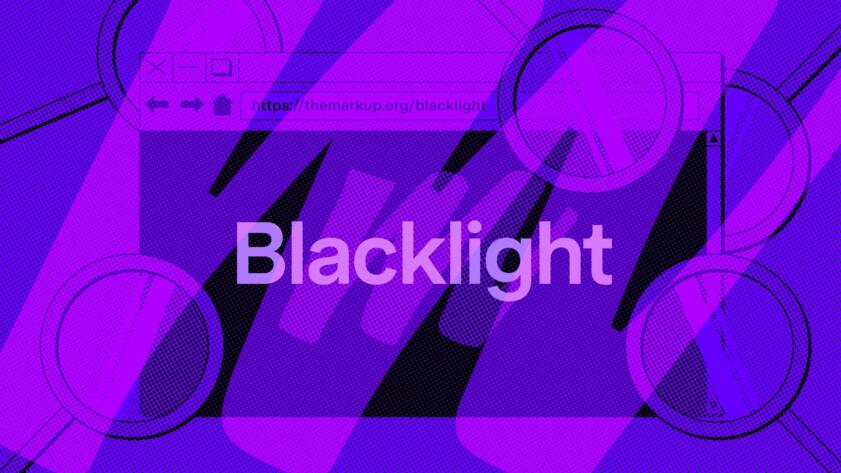Subscribe to Hello World
Hello World is a weekly newsletter—delivered every Saturday morning—that goes deep into our original reporting and the questions we put to big thinkers in the field. Browse the archive here.
Hello! I’m Ramsey Isler, and I’m the director of product here at The Markup. I manage the Product & Technology team, which maintains our website and helps develop the many awesome tools The Markup is known for. We accomplish all that without a single tracker on the site, and that’s not easy!
We live in a world where our digital products are packed with algorithms trying to suss out our needs and desires by looking at every action we take. We don’t do that at The Markup. We try to collect as little data as possible from our visitors because we respect their privacy.
Still, as a company that primarily works on the web, we need to know how well we’re serving our audience and how we might do better. We believe that one of the best ways to get to know your users is old-fashioned and simple: Just talk to them.
So this summer we’ve been interviewing some of the many researchers who have used one of our premier tools, the Blacklight Privacy Inspector. Blacklight scans websites to reveal the specific user-tracking technologies they use and who they share your data with. We launched Blacklight in autumn 2020, and since then various journalists, academics, and researchers have used it to perform more than 10 million scans. The tool has been a critical resource for dozens of research projects as well. We reached out to the people behind those projects (and some of them reached out to us!) to open a dialogue about how Blacklight can better serve them in the future.
Here’s what we’ve learned.
Blacklight users aren’t as interested in scanning specific pages as we thought they would be
When a user requests a Blacklight scan of a website, the current version of the code (as of publication) scans the homepage and one random page it can find within the site’s structure. Internally, one of the biggest items on our Blacklight feature wish list was the ability to scan specific pages within a domain. We thought that would be an impactful and highly desired capability. Surprisingly, most of the users I spoke with didn’t see that as a top priority. Some of them were definitely interested, but that interest didn’t spark the level of excitement we were expecting, and some users flatly said the feature wouldn’t make a difference to their work. We’re still going to build the feature, but this insight did change our prioritization process.
Lesson learned: Your users don’t always see the world the way you do. They often have very specific jobs to do, and they may not care as much about the things that you think are useful.

Blacklight
10 Million Blacklight Scans Later, Here’s What You Found
Our tool has been used to protect the privacy of medical patients, children, and numerous readers
People are REALLY interested in TikTok trackers
A recurring topic in the interviews was how TikTok is starting to become a top area of interest for researchers who are trying to understand the state of tracking on the internet. Some researchers who use Blacklight work with state or federal government officials, and the political issue of banning TikTok in the U.S. is driving the surge of interest here to some extent. But it’s also about the rapidly expanding popularity of the TikTok platform, especially with young people who may be particularly vulnerable to harmful data-sharing practices.
Lesson learned: The internet doesn’t operate in a vacuum, and neither do the people researching it. Hot topics change the conversation and affect what research projects get attention and funding. The more our tools can adapt to cover emerging trends, the better we can serve our audience.
Researchers want to see what’s going on with trackers in Europe
We’re an American company, and many of the researchers who use Blacklight are based in the U.S. and doing research on sites run by American organizations. For years, Blacklight’s behind-the-scenes systems have performed scans from a U.S. IP address by default. We haven’t seen many requests to change that, so it didn’t seem likely that there would be a massive unmet demand for information on the tracking situation from the perspective of a European web visitor.
It turns out that we underestimated the level of interest here. Even though these researchers are mostly based in the U.S., they’re very curious about how Europe’s General Data Protection Regulation (GDPR) and other EU regulations are affecting the state of internet tracking in other countries—and whether companies are truly following all the rules.
Whenever I brought up the possibility of adding a Blacklight feature to allow users to “spoof” scans from the EU, people’s faces lit up. The overwhelming response was, “Yes, please!”
We are now working on that feature 🙂
Lesson learned: At The Markup we like to dig deep and expose what’s hidden, but we don’t often venture outside our national borders when we do that. But the web is international, and our tools are at their best when they can shine light in dark places near and far.
There’s intense interest in monitoring trackers over time
Researchers who use Blacklight are looking at many different spaces on the internet. Some are investigating how highly sensitive personal data is being leaked by websites for opioid clinics, some are looking at government websites, and some are monitoring tracking on extremist and hate group sites. But a unifying theme from the interviews was that researchers wanted a more quantitative view of how the tracking situation on sites has changed over time.
As one researcher put it, “Sites are getting better, but they were nasty in the past.” People who are invested in creating and enforcing policies and laws that protect user data want an objective and measurable idea of how things have gotten better (or worse). Blacklight provides a snapshot of a website for only a single point in time; it doesn’t give you a sense of how trackers have evolved for that site. This appears to be a need that our users have been cobbling together their own solutions for with varying degrees of success.
Lesson learned: Researchers who use Blacklight care deeply about protecting user data, and they’re in it for the long haul. Tools that can give them historical perspective allow them to discover new avenues for research and determine whether regulations and pressure campaigns are working. We don’t have a solid way to address this with Blacklight features yet, but we’re working on it.
Our takeaway: Blacklight is helpful, and our users want to see what’s next
Each of the researchers interviewed started the conversation with abundant praise for Blacklight. Its ease of use and feature set have made it something they use often and recommend to others. Some people even use it as a teaching tool.
But with that praise came a lot of expectation that we’ll keep building out Blacklight to address new tracking techniques and empower research at a larger scale. This is a daunting challenge for a small team like ours, but we’re definitely encouraged by the impact we’ve had so far.
If you’ve used Blacklight on a project or have other feedback for our team, we’d love to hear about it! Please reach out at blacklight@themarkup.org.
Thanks for reading.
Ramsey Isler
Director of Product
The Markup





